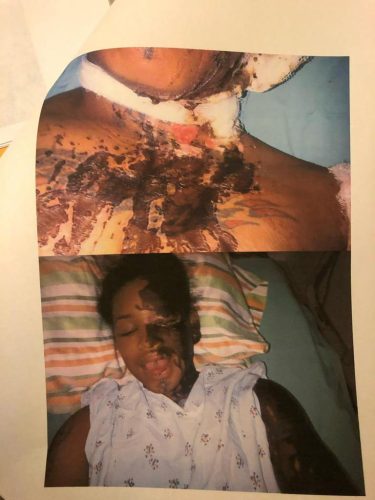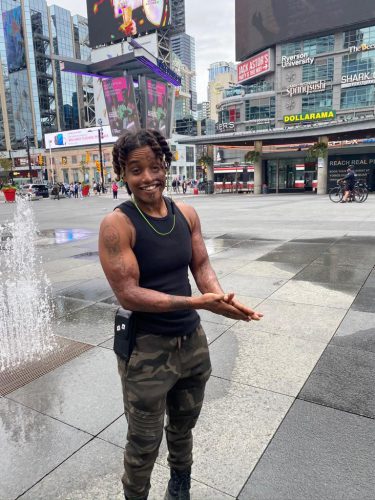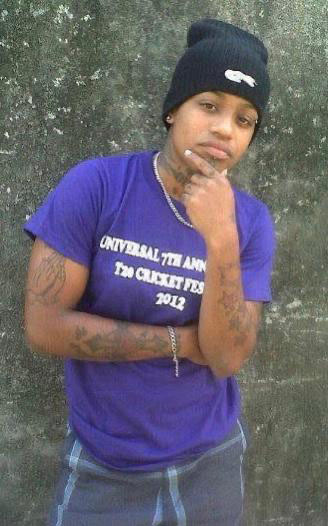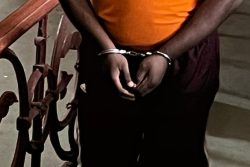Sandy Jackman never expected to become a survivor of a hate crime. “Life was never really bad for me, I never really had any problems with anyone because of who I was. My family accepted me, my church accepted me, and nothing really changed when I came out,” says Sandy, who is described as a jovial community-centered individual and comfortable with who she is.
The strength of community was instrumental in helping Sandy to receive the medical care and fresh start she needed after she was attacked with acid in June, 2013. Family, friends and Lesbian, Gay, Bisexual and Trans (LGBT) activists all came together to keep her safe and ensure she and her son would settle into their new home in Canada, where she has been resident for approximately seven years now.
Sandy feels much safer and freer but the effects of the attack linger. Visibly scarred on the left side of her face and chest, she still requires regular medical treatment to help manage pain. Despite this, she tries to not see her ailments as limitations but rather as a reminder to live her life to the fullest.

“The period after I was attacked was a very stressful one for me. I was going through so much pain and sometimes I wondered when it would all be over. I went from working out and bike riding then all of a sudden I couldn’t bathe, brush my teeth or do anything for myself. Waking up everyday and seeing the way I looked was hard. I never wanted to look in a mirror. But people gave me hope, letting me know that it was still okay for me to laugh, make jokes and like the things I liked, I just had to give my body a chance to heal.”
Today Sandy is an avid gym-goer and finds joy in being able to live her life as she see’s fit, regularly posting snippets of her excursions on Tik Tok @sugar1990.
Describing the traumatic assault as being one of the most horrifying experiences of her life, Sandy related that the media coverage on the assault made things even worse. “I felt horrible about the newspaper coverage because it was all a lie. No one came to me. No one asked me anything. They had no right to slander me like that,” said Sandy.
In Guyana and the rest of the Caribbean, those who identify as LGBT often find themselves victims of physical and mental trauma from the wider public. Negative portrayals of LBT women

continue to dominate the media. Portrayals usually fetishise or blame their gender identity and sexual orientation as being justification for the violence against them. In a space where majority of media personnel rarely do due diligence and biases seep into reports, the inaccurate story behind Sandy’s attack was quickly spread and solidified in the public’s mind.
Several news articles painted the attack against Sandy as being caused by a triangular love affair she was involved in. Sandy believes that her attraction to women was being used to cover up the real motives for the crime, which were hate and jealousy. “I was never in a triangular love affair. I wasn’t burned with acid because of that – the person who had acid thrown on me was a man I was seeing for five years.”
The man in question is a well-known local businessman who Sandy met when she was 16. Karen Jackman, who adopted Sandy when she was just three months old, recounted her resistance towards the man’s involvement with Sandy. “From the beginning I told her that this man was not a good person. He was someone known to us because her father used to work with him for many years. He was very controlling of Sandy, he always had a set of people watching her,” said Karen.
During this period Sandy was still figuring out who she was and what she wanted for herself and child but being under the thumb of the much older man made it difficult. “I was a kid, I had just had my son and he took advantage of that. He was very possessive. I constantly had to fight to be a teenager and enjoy life. If I went out anywhere he would always show up. Many times he became violent but I always fought back.”
Sandy recounted that when he found out she was attracted to women, he became even more aggressive towards her. “I know it was him that sent those men to attack me, I had no problem with no one else. It was not the first time he tried to seriously hurt me. He once tried to poison me through food, I fell really ill but I didn’t die. He was trying to kill me so bad,” she said.
The rates of Intimate Partner Violence amongst LGBT persons are similar and in many cases greater than that of heterosexuals. A COC Netherlands and Guyana RainBow Foundation (GuyBow) report, titled, “From Fringes to Focus – A deep Dive into the lived realities of Lesbian, Bisexual, Queer Women and Trans Masculine Persons in 8 Caribbean countries,” found that 28% of respondents believed that sexual and physical assaults against them were motivated by their sexual orientation and gender identity.
It was shortly after Sandy let the man know that she was ending the relationship and dating a woman, that she was attacked. “The same day I was burned, he was calling to say he wanted to meet me and I told him where I was. He kept calling to confirm where I was, which I found strange. The last time he called and I answered he wasn’t saying anything. I think the call was a signal because right then two men on a bicycle came up to me and threw the acid in my face.”
That day marked the beginning of continued health issues and doctor’s visits for Sandy. “She had to go through so many surgeries and it was so much pain for her, she even lost her eye. When she left Guyana she couldn’t move her arms. They were both up in the air, her feet were twisted up, and she could hardly walk or move. Today we are so glad that she can run and do everything she wants,” said Karen.
While police officers collected a statement from Sandy, no official charges were made. As Sandy was receiving constant messages and phone calls threatening her death, the family became very concerned for her safety and did not pursue the case. Sandy had to be placed in a safe house after being discharged from the hospital. “I couldn’t talk the truth because he had people watching me and threatening to kill me. It was scary. I wasn’t the only one that he did this to though. Not long after me he had people throw acid in his baby-mother’s face. She was a nurse at GPHC,” said Sandy.
Despite the trauma from the attack, Sandy is aiming to live life on her terms and decided that it was finally time to share her side of the story. She, however, is still unable to act on her desire to visit her homeland due to safety concerns. “Guyana is my home, I feel safer in Canada but I always felt more comfortable in Guyana,” said Sandy.
Sandy’s adopted mother, Karen states that Sandy’s inability to return home is one of her greatest sorrows. “One day we would be glad to see her again, we miss her a lot. We talk almost everyday with her and her son, but it would be good to have her home,” she said.










